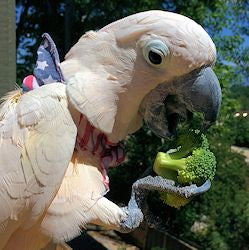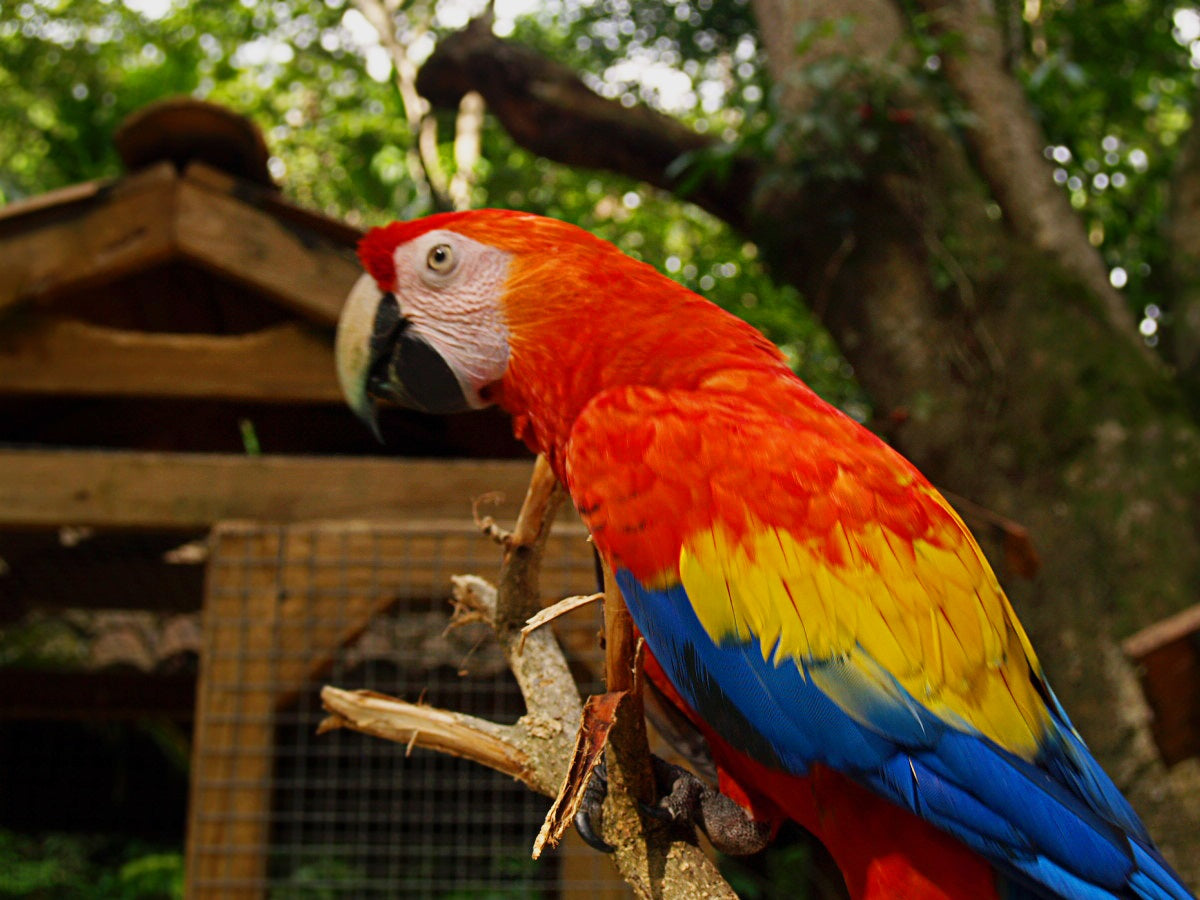WARNING:
- Always conduct training session inside until your bird is comfortable wearing the harness.
- Never leave your bird unattended in a bird harness, either indoors or outside
- Never tie your bird to his perch with the bird leash. He may become startled and panicked causing injury or death.
- Make sure that the harness is snug but not too tight. You should be able to slip a finger between the bird harness and the bird's body.
- If you live in an area with predators such as falcon, ALWAYS walk in pairs so one person can watch for hawks while the other insures the bird stays safe.

Setting the Stage For Harness Training Your Parrot
Training your pet bird to wear a bird harness will open up a world of fun and enriching socialization both of you. Before you start training your parrot figure out what motivates your bird. Find a reward that your bird craves, whether it is a special toy or a delicious treat. Enthusiastic verbal praise and "scritches" in favorite places also are great rewards for birds. Schedule a short, daily time to train your bird to wear the harness.
Helpful Tips:
- Choose your color carefully if your bird is afraid of colors.
- Use Clicker Training to teach your bird to tolerate you touching of its’ head & wings.
- Keep the training session short and fun to avoid mental fatigue.
- Pick a consistent time to practice, preferably on a daily basis.
- If your bird becomes scared, back off and train something your parrot has mastered.
- If you live in an area where
Training an Anxious or Older Bird to Wear a Harness
- Place your bird on a table or a training stand in a location where it feels comfortable and can be attentive. Place the bird harness in your hand, hiding most of it. Show your bird tiny portion of the harness.
- When your bird becomes curious, make a peek-a-boo style game of allowing your bird to play with the harness. Immediately reward your bird. Repeat this process several times, praising and rewarding each time.
- After your bird has shown consistent curiosity of the bird harness, allow it to mouth the harness for short periods of time. Again, lavishly praise your bird.
- Show more and more of the harness, quickly hiding it if your bird becomes scared. Remember, a long leash may look like a scary snake, so take this phase slowly. Reward each progressive step generously until your bird is able to tolerate the entire harness and leash.
- Next, work on improving your birds sense of comfort with the harness being close and then touching its body. Always be very generous about rewards and keep the training session’s fun. Make a game of your bird's natural curiosity to speed learning.
- Lay the harness out for your parrot to see. Undo the clips teaching your bird that the sound of the clips snapping together is safe.
- Start working on placing the harness over your birds head and removing it. If your bird becomes fearful, make sure you end the training session on a positive note. Praise each progressive step generously.
- Once your bird allows you to place the harness over its’ head, work on developing comfort with allowing it around its wings and chest. Generously praise this next step of progress.
- When your bird is comfortable the harness on its body work on clipping the bird harness in place. Again, reward with verbal praise and treats at each new step.
- Observe how the bird leash fits and slowly adjust it to an appropriate fit. Allow your bird to observe you working with the clips and hear them clicking open and shut. DO NOT allow the bird to become frightened by the leash. Praise the bird for cooperation and reassure it when fearful.
- Begin increasing how long your bird tolerates wearing the bird harness. Start slowly, possibly 30 seconds removing the leash before the bird becomes agitated. Praise each progressive step generously.
- When your bird can tolerate wearing the harness for 5 minute segments, moving your bird to different rooms.
- When your bird is okay walking from room to room, you can take it outside. Choose a day when the weather is nice and when your yard is quiet and free from any pets and predators.
- Use your new harness frequently so that your bird doesn’t regress to fearing it again.






1 comment
Carolyn Stuart
I just bought a elecuces parrot he’s a baby just trying to get information about him
I just bought a elecuces parrot he’s a baby just trying to get information about him